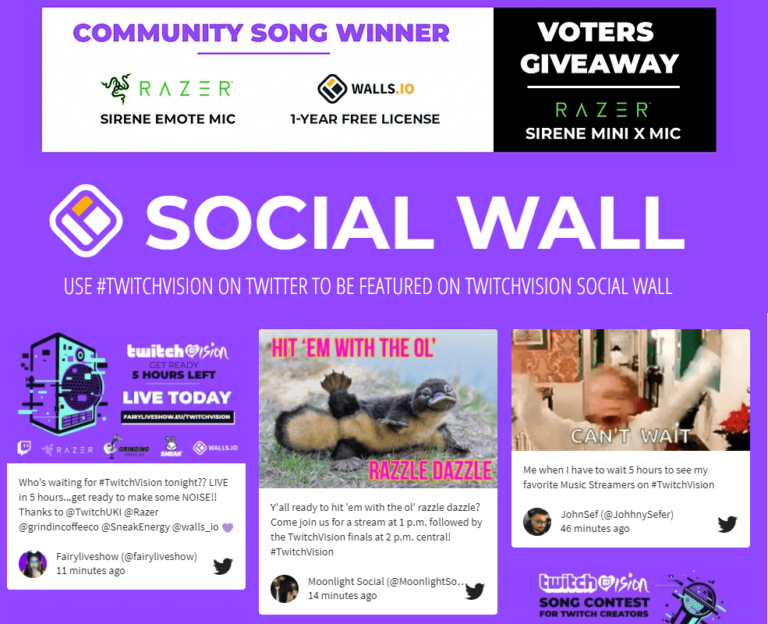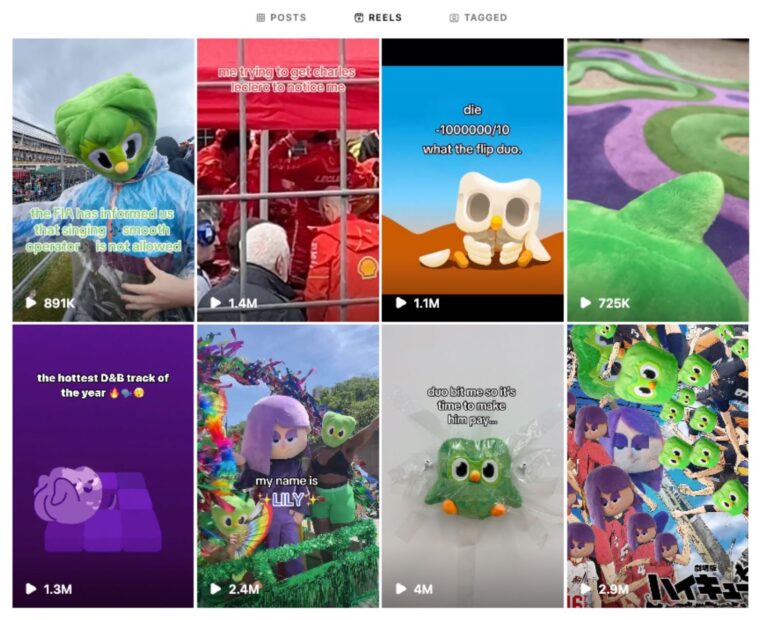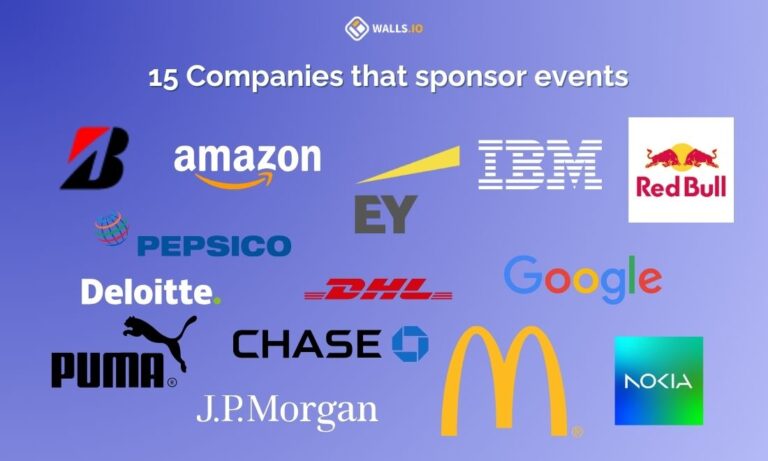It’s essential to make your social media content accessible so everyone can engage with your posts regardless of their abilities. It’s about more than just meeting legal requirements; it’s about creating an inclusive environment where everyone can join the conversation.
This guide will explain why your brand needs to look into social media accessibility and how you can achieve it on platforms such as Facebook, Instagram, TikTok, YouTube, LinkedIn, and X.
Being more inclusive
Making social media content accessible ensures everyone, including individuals with disabilities, can engage with and benefit from your content. By making your content accessible, you amplify your audience and forge an open environment where everyone can share ideas, learn, and connect.
Legal requirements
There are also legal reasons for making your social media content accessible. Many countries have laws that mandate digital accessibility. For example, in the United States, the Americans with Disabilities Act (ADA) and Section 508 of the Rehabilitation Act set standards for web-based accessibility. These laws require that digital content, including social media posts, be accessible to people with disabilities, ensuring they have the same opportunities to engage with online content as everyone else.
⭐Related: Social Media Accessibility: Key Laws and Best Practices
Discover practical, platform-by-platform insights and strategies to make your social media content ideas accessible and inclusive for everyone.

Facebook accessibility
Facebook has made significant strides in accessibility. Here’s what you need to know:
What Facebook offers for accessibility
- Alt text for images: Facebook automatically generates alt text for images, but you should refine it for accuracy. To add alt text: Upload an image, click ‘edit photo,’ select ‘alternative text,’ and enter your custom description.
- Closed captions for videos: You can upload a separate subtitle file or use Facebook’s auto-captioning tool.
- Text-to-speech for status updates: Facebook can read out status updates, making them accessible to visually impaired users.
Add an accessible Facebook widget to your website or display.
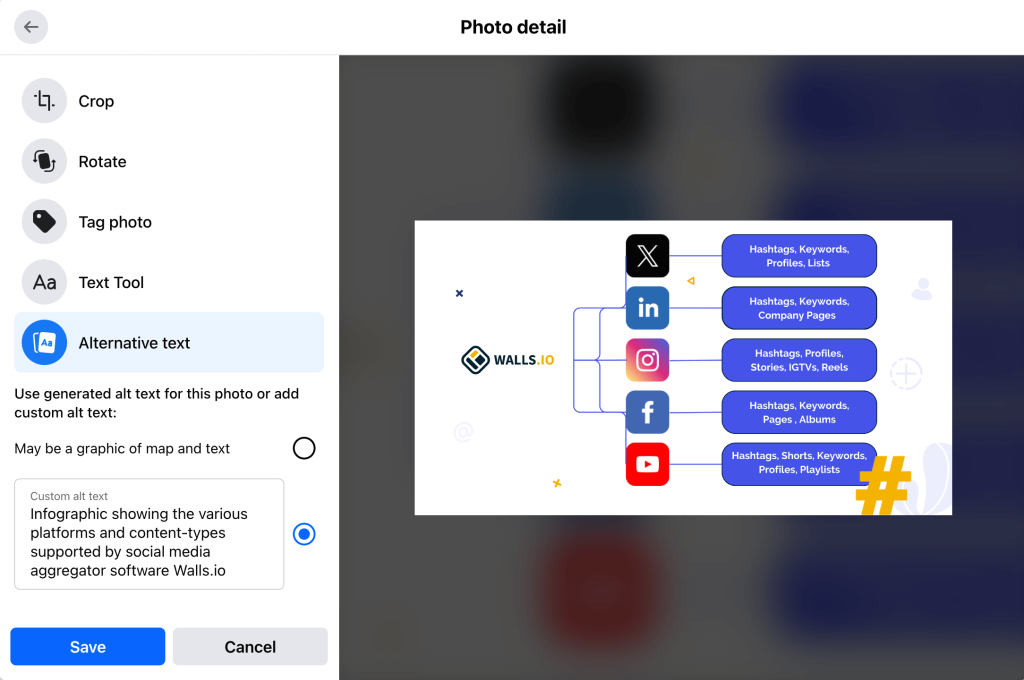
Tips for accessible Facebook content
- Use clear, descriptive captions for your posts.
- Avoid using too many emojis, as they can perplex screen readers.
- Ensure the link text is descriptive.

Instagram accessibility
Instagram’s focus on visuals can pose accessibility challenges, but there are ways to make it work:
What Instagram offers for accessibility
- Alt text for images: Instagram allows you to add custom alt text to your pictures. To add alt text, after selecting your photo, tap’ Advanced Settings’, tap ‘write alt text’, and enter your description.
- Automatic captions for IGTV: Instagram can automatically generate captions for IGTV videos.
Add an accessible Instagram widget to your website or display.
Tips for accessible Instagram content
- Use camel case for hashtags (e.g., #SocialMediaAccessibility instead of #socialmediaaccessibility).
- Describe your images in the caption as well as in alt text.
- Use the text tool in Stories to provide descriptions of visual elements.

LinkedIn accessibility
LinkedIn has been improving its accessibility features:
What LinkedIn offers for accessibility
- Alt text for images: Add alt text to images in your posts and articles.
- Closed captions for videos: LinkedIn supports closed captions for native video uploads.
Add an accessible LinkedIn widget to your website or display.
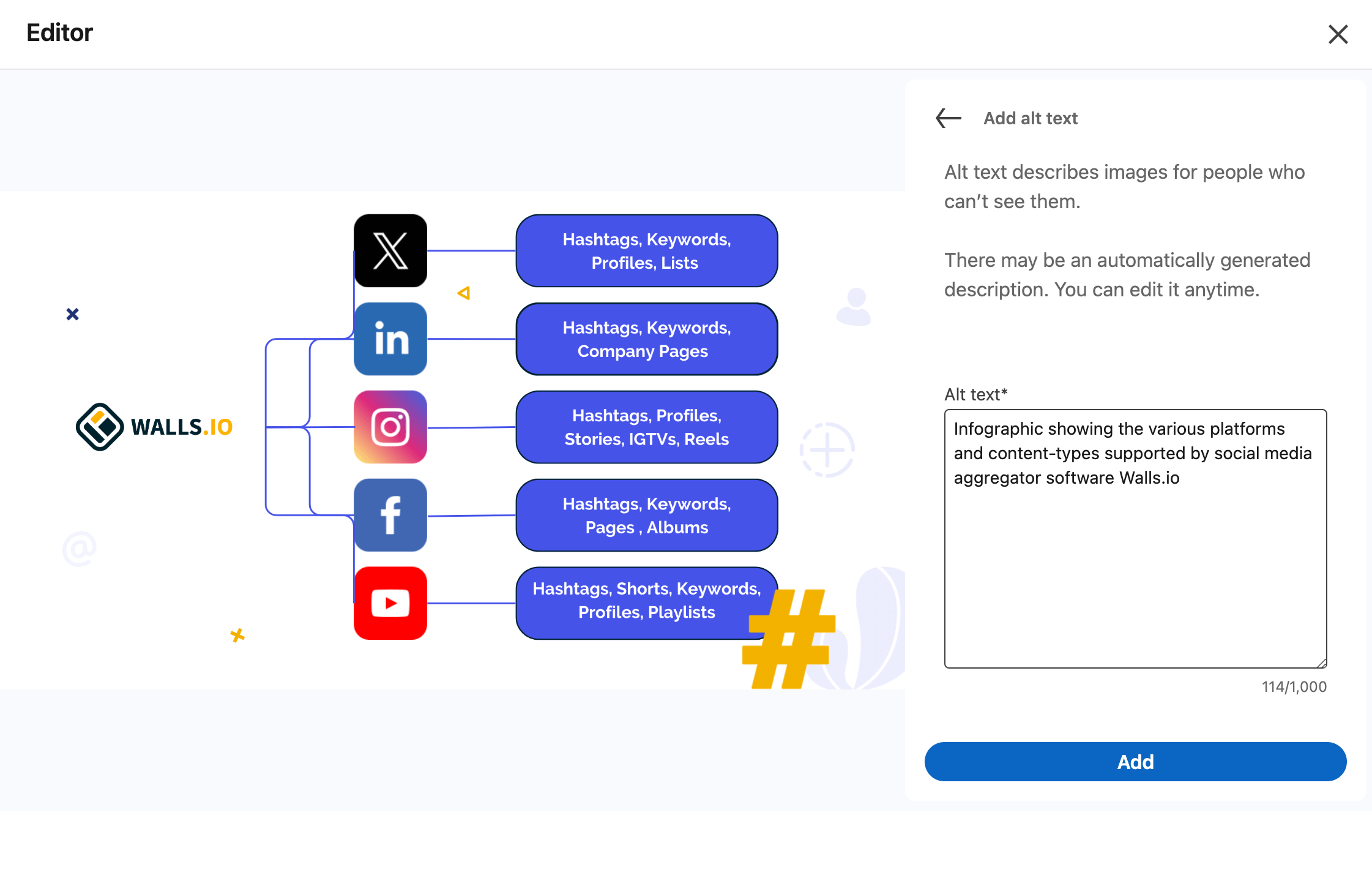
Tips for accessible LinkedIn content
- Use clear, professional language in your posts.
- Break up long posts with subheadings and bullet points.
- Ensure titles and summaries of shared articles are descriptive.

X (Twitter) accessibility
Twitter’s character limit poses unique challenges, but accessibility is still achievable:
What Twitter offers for accessibility
- Alt text for images: You can add alt text to images in your tweets.
- Captions for videos: Twitter supports closed captions for videos.
Add an accessible X (Twitter) widget to your website or display.
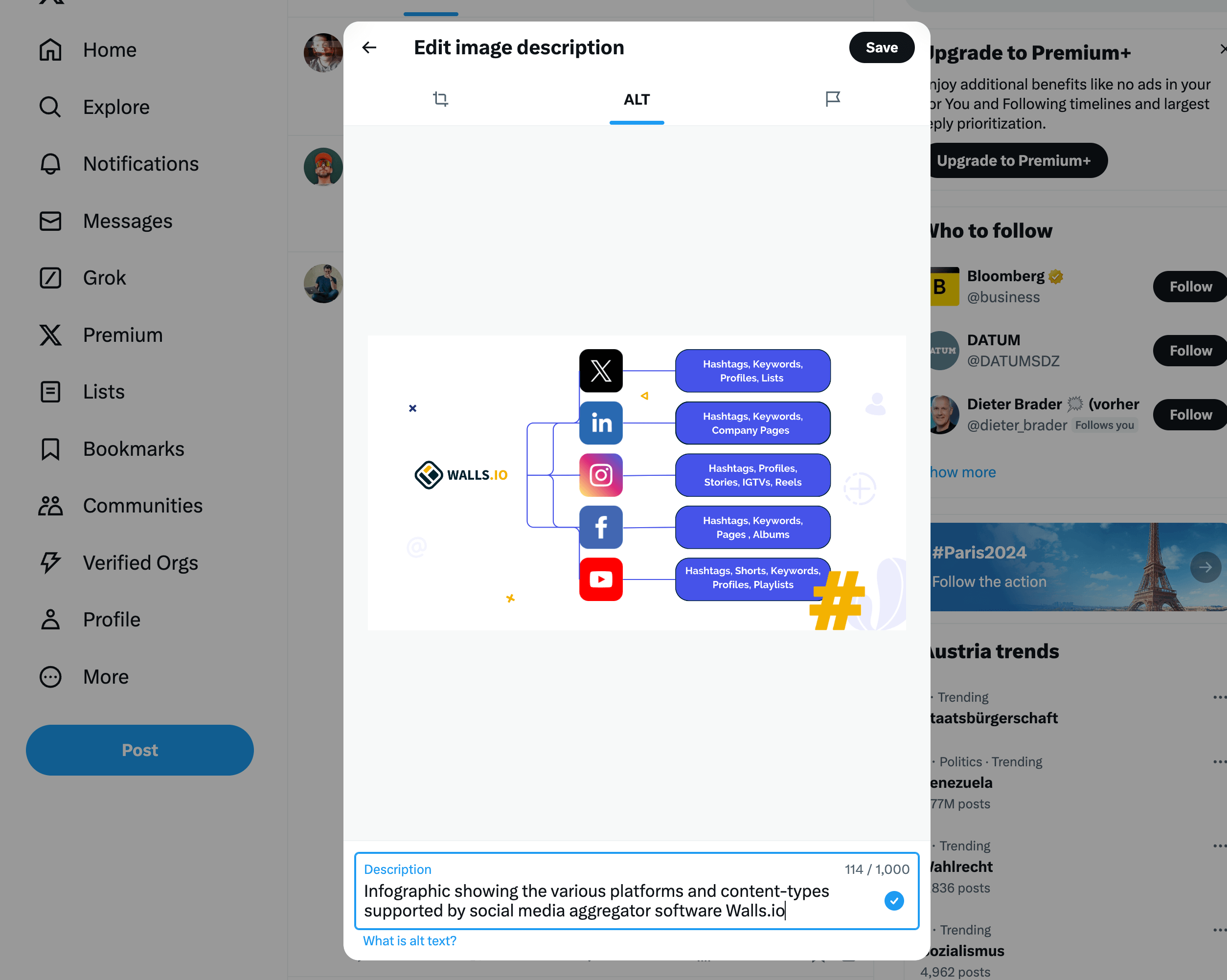
Tips for accessible X (Twitter) content
- Use camel case for hashtags.
- Spell out abbreviations at least once.
- When using emojis, place them at the end of your tweet.

TikTok accessibility
TikTok is relatively new to accessibility but is making progress:
What TikTok offers for accessibility
- Auto captions: TikTok can automatically generate captions for your videos.
- Text-to-speech: Use TikTok’s text-to-speech feature to make your text overlays more accessible.
Add an accessible TikTok widget to your website or display.
Tips for accessible TikTok content
- Always review and refine auto-generated captions for accuracy.
- Use clear, high-contrast text in your videos.
- Describe critical visual elements in your voiceover.

YouTube accessibility
YouTube has been a leader in video accessibility:
What YouTube offers for accessibility
- Closed captions: You can upload your caption file or use YouTube’s auto-captioning feature.
- Transcripts: YouTube automatically generates transcripts for videos with captions.
- Audio description: You can upload a separate audio track with descriptions of visual elements.
Add an accessible YouTube widget to your website or display.
Tips for accessible YouTube content
- Review and refine auto-generated captions.
- Use clear, descriptive titles and descriptions for your videos.
- Consider creating a separate audio description track for visually heavy content.
Social media platforms have made significant strides in accessibility, yet some features still need improvement:
- Instagram: Many users fail to add alt text to images, and Stories and Reels often lack captions, with custom text colors sometimes causing poor color contrast.
- X (Twitter): Alt text is frequently neglected, videos are often posted without captions, and long threads can be complex for screen reader users to navigate.
- Facebook: Automatically generated alt text is often insufficient, videos usually lack captions, and dynamic content can be challenging for users with cognitive disabilities.
- TikTok: Automatic captions can be inaccurate, audio descriptions are rarely used, and text overlays often have poor contrast or are displayed too briefly.
- LinkedIn: Alt text is often missing from images, videos typically lack captions, and shared documents are frequently inaccessible for screen readers.
- YouTube: Automatic captions can be inaccurate, audio descriptions are underused, and the user interface can be complex for some users to navigate.
Creating or displaying accessible social media content goes beyond complying with WCAG guidelines or ensuring screen reader compatibility. It’s about adopting a more inclusive approach to social media marketing that benefits everyone. By prioritizing accessibility, you’re expanding your audience and showing your brand’s dedication to inclusivity and user-generated content that everyone can enjoy.
Accessible social media aggregator layout by Walls.io
- Integrate user-generated content from various social media platforms into your website, ensuring accessibility compliance and enhanced social engagement.
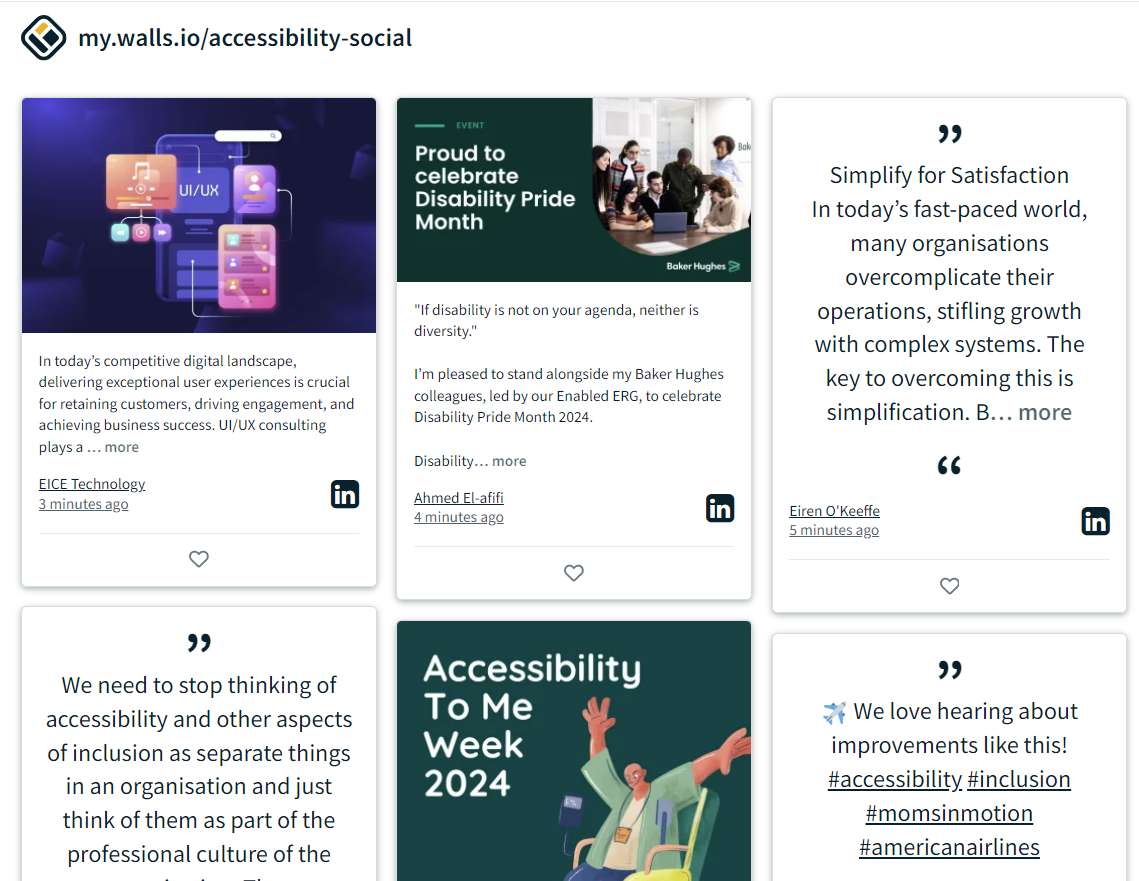
Walls.io seamlessly pulls content from Facebook, Instagram, TikTok, YouTube, LinkedIn, and X (Twitter), creating a unified feed you can embed on websites, display on large screens, or integrate into event apps.
Color Contrast Analyzer (CCA)
- Use TPGi’s free colour contrast checker to optimize your content – including text and visual elements – for individuals with color-blindness or low vision impairments.
Text on Background Image Accessibility Check
- This tool helps you determine the legibility of text based on color contrast when placed over background images.
YouDescribe
- A database of YouTube videos with descriptive audio created by volunteers. To get started, paste a YouTube URL into the search field and click Create/Edit Descriptions.
Aegisub
- A free, open-source tool for creating and editing subtitles can also be used to generate video transcripts.
Thread Reader App
- This Twitter bot unrolls threads for easier reading. To use it, tag the app and write “unroll” in reply to the thread you want to expand.
CapCut
- Automatically add captions to your Instagram Reels, TikTok videos, and other videos with CapCut.
Conclusion
Stay abreast of new features on social platforms and heed audience feedback to enhance the inclusivity of your content. Initiate by incorporating alt text to images, captioning videos, and describing visual content in text form. Your audience and engagement rates will undoubtedly benefit from these efforts. Let’s transform social media into an inclusive space where everyone can participate, engage, and connect. Ultimately, isn’t that the essence of social media?

